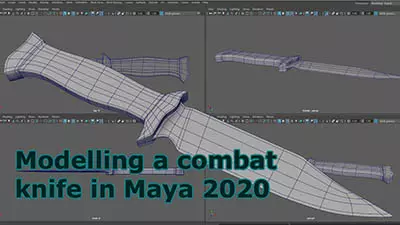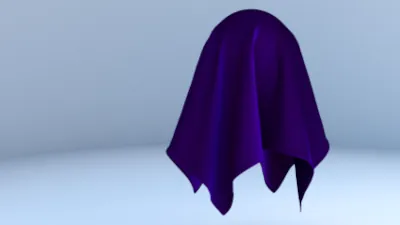Introduction to Maya - Rendering in Arnold
This course will look at the fundamentals of rendering in Arnold. We'll go through the different light types available, cameras, shaders, Arnold's render settings and finally how to split an image into render passes (AOV's), before we then reassemble it i
#
1
18-09-2006
, 03:45 AM
Registered User
Join Date: Sep 2005
Join Date: Sep 2005
Posts: 21
Rotating in relation to a particles direction.
I have a polyplane that I would like to follow a particle.
I have done the following the pariticle bit, but now I need to rotate the polyplane acordingly.
What I want is the polyplane to orient toward where the particle will be in a moment. To be pointing where it is heading so to speak. Like an arrow.
I'm not sure but i think what I need to do is to take the particles velocity and use that information to derive the orientation.
But how is the math? And how is the MEL way?
Do I make sence or do I need to explain more?
Thank you.
#
2
21-09-2006
, 07:30 AM
it's all in the docs
A
#
3
21-09-2006
, 01:08 PM
Takes a bit of time.
Oh, and you can mess with the driven key stuff. Don't know where it is, but I know that'll fix it.
It alows you to move objects in relation to other objects.
"The reasonable man adapts himself to the world; the unreasonable one persists in trying to adapt the world to himself. Therefore all progress depends on the unreasonable man."
George Bernard Shaw - Man and Superman
#
4
22-09-2006
, 02:15 AM

particles are a simulation thus you wont know how many there will be etc etc. Do what I said with the instancer that should do it.

A
#
5
22-09-2006
, 01:46 PM
Registered User
Join Date: Sep 2005
Join Date: Sep 2005
Posts: 21
I have worked around my problem thoug. I choose to shift the solution backwards a few frames. So what I did was this:
I know at every frame where my particles are at the moment. I then store these postitions on locaters, and compare this position 2 frames ahead. With these 2 positions I can now reduce everything to a mere orient constraint.
Thanks by the way.
#
6
22-09-2006
, 01:58 PM
next time
#
7
18-10-2006
, 10:50 AM
Registered User
Join Date: Oct 2006
Join Date: Oct 2006
Location: AUSTRALIA - MEL.
Posts: 1
mel
I am interested in the same thing, since I am new here. I agree with your description of the process which also means a cross-section at any time which is the same as tomography used in a PET scan.
One expects then for PET scans and MEL rotation you descibe, that their mathematics is related to the Heisenberg theory called the uncertainty principle, from the 1930's.
I hope you find the help on your question.
Also good luck with maya .
Posting Rules Forum Rules
Similar Threads
particle direction with animated characters
by Razor Blade in forum Dynamics & Special Effects replies 0 on 19-05-2012
rotating UV's of polygon in Z -direction
by chayanvinayak in forum Maya Basics & Newbie Lounge replies 2 on 17-05-2007
Particles moving on a surface! Please Help!
by Eurofiles in forum Dynamics & Special Effects replies 4 on 31-07-2006
Particles moving on a surface! Please Help!
by Eurofiles in forum Work In Progress replies 1 on 28-07-2006
Rotating instanced particles
by iasion in forum Animation replies 5 on 19-02-2003
Topics
Free Courses
Full Courses
VFX News
How computer animation was used 30 years ago to make a Roger Rabbit short
On 2022-07-18 14:30:13
Sneak peek at Houdini 19.5
On 2022-07-18 14:17:59
VFX Breakdown The Man Who Fell To Earth
On 2022-07-15 13:14:36
Resident Evil - Teaser Trailer
On 2022-05-13 13:52:25
New cloud modeling nodes for Bifrost
On 2022-05-02 20:24:13
MPC Showreel 2022
On 2022-04-13 16:02:13










